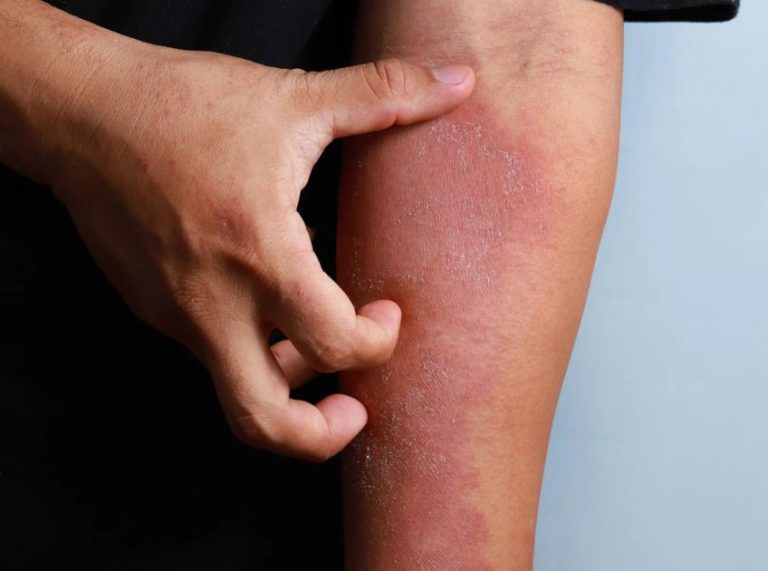
Important: This article is for informational purposes only. Please read our full disclaimer for more details.
Article Contains
- What Causes Red Bumps On The Back Of The Throat?
- Symptoms Of Cobblestone
- Is It Contagious
- How To Prevent Cobblestones?
- Home Remedies To Manage Cobblestone
- Managing And Treating Red Bumps On The Back Of The Throat
- What To Expect Once You Get Red Bumps On The Back Of Your Throat?
- When To See A Doctor?
Have you recently seen red bumps on the back of your throat and wondered what they are and where they come from?
Getting bumps on the roof of the mouth, tongue, and other body parts is pretty common. Luckily, most of them resolve on their own, and if it doesn’t indicate some underlying issue, that is curable.
However, if you see bumps on the back of the throat that are red and slightly irritating, it could be cobblestone. These bumps often look like pebbles and are caused by postnasal drip from infections and allergic reactions.
Let’s find out more about these red bumps, their causes, symptoms, preventive measures, and treatment.
What Causes Red Bumps On The Back Of The Throat?
As already mentioned, red bumps indicate a medical condition called cobblestone throat. Usually, it starts with inflamed tissues in the back of your throat, making it appear bumpy.
Often, these raised tissues cause panic, making people confused if they are cancerous growth. Fortunately, these red bumps are harmless and do not indicate a sign of cancer.
One of the major causes of getting red bumps on the back of the throat is an infection, usually caused by an allergen. People with strong immune systems can fight off such allergies, and the bumps go away after a few days.
Besides allergies, other causes of cobblestone throat include the following-
- Cold
- Flu
- Acid reflux
- Breathing dry air
- Smoking
- Upper respiratory infections
Usually, the red bumps appear when tonsils and adenoids get irritated due to an allergen and swell. Since the function of these two organs is to prevent germs from entering the respiratory tract, they get inflamed in response to an allergen.
As a result, they secrete more mucus to flush the germs out. As the mucus thickens, it causes irritation to the tonsils and adenoids, resulting in the development of red bumps on the back of the throat, that is, cobblestones.
[Read : How to Use Aspirin for Razor Bumps]
Symptoms Of Cobblestone
The primary symptom is the appearance of red bumps on the back of the throat that look like pebble stones. Usually, they are inflamed.
Other symptoms include the following-
- Dry cough and hoarseness
- Bad breath and scratchy throat
- Fever
- Pain while taking and swallowing
Is It Contagious?
No, cobblestone is not a contagious condition. However, it can happen due to some transmissible diseases such as viral flu and strep throat. Both these diseases occur due to viruses and bacteria that can cause excessive mucus production, causing red bumps or cobblestone throats.
It is not necessary for a person to develop a cobblestone throat when catching some viral or bacterial infection from a person suffering from cobblestone. This is mainly because the development of red bumps depends upon an individual’s immune response.
How To Prevent Cobblestones?
If you are prone to getting red bumps on the back of the throat due to irritants and allergens, the below preventive measures can help-
- Identify and avoid allergens that cause cobblestone throat
- Do not smoke
- Maintain a healthy lifestyle to maintain a healthy immune system
- Avoid chances of getting viral or bacterial infections
Home Remedies To Manage Cobblestone
Since red bumps appear as a result of inflamed tonsils and adenoids, steps can be taken to manage the inflammation. It can be done by.
- Drinking warm beverages: Drinking fluids that can soothe the inflamed tonsils, such as warm water, soup, tea, etc., can help.
- Gargle: Gargling using warm water with salt can keep the mucus thin and help in flushing out the irritating allergens from the throat.
- Humidifier: Add moisture to the room by using a humidifier. Inhaling moisturized air will help soften the mucus.
- Use honey: Honey helps to soothe an irritated throat. It also fights off bacteria that are causing irritation.
Managing And Treating Red Bumps On The Back Of The Throat
Usually, the doctor diagnoses the problem by examining the cause behind the inflamed tonsils, adenoids, and postnasal drip. You may be prescribed-
- antibiotics to clear the bacterial infections
- over-the-counter (OTC) nasal sprays
- antihistamines and decongestants to thin the mucus
In severe cases, the doctor may advise you to take an allergy test to know the possible allergens behind cobblestone throat. Once diagnosed, you need to take preventive measures to avoid getting in contact with those allergens and safeguard yourself from getting the annoying red bumps.
[Read : Why Do I Have A Bump On My Nose?]
What To Expect Once You Get Red Bumps On The Back Of Your Throat?
First of all, do not panic. If you are getting red bumps for the first time, getting paranoid is obvious. However, they are not as dangerous as they seem.
Usually, these bumps disappear within 7 to 12 days when the causal viral or bacterial infection starts reducing. If cobblestone is due to acid reflux or intense germ infestation, it may take more time to resolve.
However, if the problem persists and it is creating huge discomfort, seek medical help.
When To See A Doctor?
Book an appointment with the doctor when you experience any of the following-
- red bumps keep growing and spreading
- symptoms are not resolving after home remedies
- severe throat pain
- difficulty breathing
In such cases, the doctor may prescribe medicines to treat the condition and provide some relief.
Red bumps on the back of the throat are not uncommon, and people with weak immune systems often experience them. The good thing is this condition, also called cobblestone, is not harmful, other than causing a little discomfort.
Usually, taking home remedies manages the condition and provides relief. However, if the symptoms prevail, talk to your doctor to thin mucus and reduce inflammation.
Related Articles
- What’s Causing This Bump on My Forehead, and Should I Be Concerned?
- Bump on the Side Foot – Common Causes & Treatment Options
- What Causes Bumps On The Roof Of Your Mouth?
- How To use Apple cider Vinegar For Lipoma Treatment
- Apple Cider Vinegar for Razor Bumps – Benefits, Uses and Prevention Tips
- Baking Soda for Razor Bumps – Benefits, Uses and Precautions
- Tea Tree Oil for Razor Bumps – Benefits, Uses and Prevention Tips
- How to Get Rid of a Nose Piercing Bump?
- Why Do I Have White Bumps on My Tongue?
- How to Get Rid of Razor Bumps Using Aloe Vera?
- The 12 Best Home Remedies To Get Rid Of Razor Bumps Fast
- How to Get Rid of Razor Bumps In The Bikini Area?
- 7 Best Razors For Sensitive Skin
- Red Spot On Nose: Causes And Treatments
- How to Tell If It’s Herpes or Razor Bumps? Causes, Symptoms and Treatment
- Scabies Vs Bed Bugs: What’s the Difference?

















